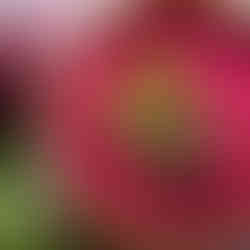Food Dyes: What They Are, What to Avoid, and Natural Alternatives
- Cheryl Martinez
- Apr 16
- 4 min read
Let’s talk about something that might be hiding in your favorite snacks, drinks, and even plant-based treats: food dyes. I know it’s one of those topics that can feel kinda overwhelming or easy to overlook when you’re just getting started on your Veginner journey. But I promise, by the end of this post, you’re going to feel super empowered to read labels like a pro, spot the red flags (pun totally intended), and find delicious, colorful alternatives that align with your values and your health.

This blog post may contain affiliate links so I can share my favorite products and earn a small commission at no cost to you!
What Are Food Dyes, Anyway?
Food dyes are substances used to add or enhance color in foods. They’re used to make food more visually appealing, especially in processed foods like candy, cereals, beverages, sauces, and even some "healthy" snacks. There are two main categories:

Synthetic (Artificial) Dyes: These are made from petroleum (yes, you read that right) and are chemically processed. Common examples include Red 40, Yellow 5, and Blue 1.
Natural Dyes: These come from plants, minerals, or even insects (which we’ll talk about more in a sec).
Why Should Vegans and Health-Conscious Folks Be Cautious?
Animal-Derived Ingredients: Some natural dyes, like carmine (also called cochineal), are made from crushed beetles. Not exactly plant-based, right?
Animal Testing: Several artificial food dyes are routinely tested on animals, even today. This includes tests for toxicity and long-term effects.
Health Concerns: Studies have linked certain synthetic dyes to hyperactivity in children, allergic reactions, and potential carcinogenic effects. Europe has even banned or restricted some of the dyes that are still widely used in the U.S.
Common Food Dyes to Avoid
Here’s a list of the most common synthetic dyes to watch out for on ingredient labels:
Red 40 (Allura Red): Linked to hyperactivity and immune responses.
Yellow 5 (Tartrazine): Known to cause allergic reactions in some people.
Yellow 6 (Sunset Yellow): May contain contaminants linked to cancer.
Blue 1 and Blue 2: Associated with behavioral issues and possible organ toxicity.
Carmine / Cochineal Extract: Not vegan, made from insects.
Vegan and Natural Food Dye Alternatives (That Actually Work!)
The good news? There are SO many vibrant, beautiful food dye alternatives to synthetic dyes, and many of them come straight from nature:
Beet Juice or Powder: Deep red or pink (great for frostings, smoothies, and sauces).
Turmeric: Bright yellow (a little goes a long way!).
Spirulina: Blue-green, great for smoothies, icing, or try my mint chocolate Spirulina Nice Cream!
Paprika or Annatto: Orange to reddish hues.
Matcha: Gorgeous green.
Red Cabbage: When boiled and pH-balanced, it can give blue or purple tones.
Hibiscus: Known for delicious tea, you can also use the dried flower powder to add a lovely pink or red tint to your food.
Can You Make DIY Food Dyes at Home?
YES! And it’s actually a fun little kitchen experiment. Here's how to start:
Boil or blend your coloring agent (like beets, spinach, turmeric, etc.) with a small amount of water.
Strain it if needed.
Use the liquid as your dye or reduce it over heat for a more concentrated color.
You can also dry and grind some ingredients (like spinach or beets) into powder form, which keeps well in the pantry and is great for baking!
Pro Tips for Using Natural Food Dyes
They work best in frostings, sauces, smoothies, and icings.
Colors might fade with heat, so if you’re baking, try powders instead of liquids.
Test small batches first to get the color intensity you want.
Frequently Asked Questions (FAQs)
Are all food dyes non-vegan?
No, not all dyes are non-vegan, but many are either animal-derived or tested on animals. Always double-check the ingredient list or look for certified vegan products.
Is Red 40 vegan?
Technically, yes, because it’s synthetically made. But many vegans choose to avoid it due to animal testing and potential health concerns.
Is carmine vegan?
Nope! It’s made from crushed insects.
Are natural food dyes safe?
Yes, most natural dyes are safe when used appropriately. Just be aware of any allergies you might have.
Where can I buy vegan food coloring?
Look for brands like ColorKitchen, Supernatural, or Watkins. Many are available online or in natural grocery stores.
Can I make a rainbow cake without artificial colors?
Yes! Use beet, turmeric, spirulina, blueberry juice, and more. It takes a little effort but it's totally worth it.
What This Means for Your Vegan Journey
I know it can feel like there’s always something else to learn or worry about when you go vegan, but I promise you this: it’s not about being perfect. It’s about making more compassionate, informed choices that align with your values. Colorful food is fun and beautiful, and you don’t need artificial stuff to make your meals pop!
You’re doing amazing, and I’m so proud of how you’re showing up for yourself, the animals, and our planet. Keep reading those labels, keep asking questions, and keep learning. You’ve got this.
Big love, Cheryl 🌿
If you enjoyed this blog post, please pay it forward or check out my shop. Use code VEGINNER5 for $5 CASH on me! Proceeds support animal sanctuaries. 🐮🐥🐷 xo, Cheryl


















